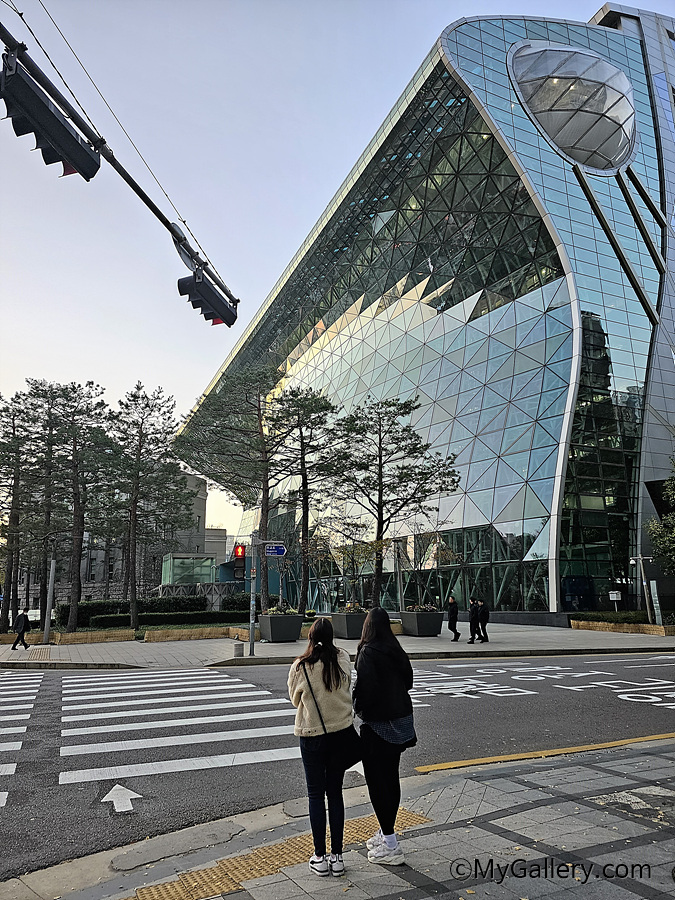Seoul City Hall is an important landmark in the heart of Seoul, South Korea.
Originally Seoul city hall building was built in 1926 during the Japanese occupation and later replaced the old City Hall building, which was demolished in 2006. Seoul City Hall was newly born in October 2012.
Seoul City Hall Building
Here are some key features and information about the new Seoul City Hall building.
Design and Architecture
The new Seoul City Hall was designed by IAC Architects and is surrounded by prominent glass facades. Design focuses on sustainability and energy efficiency by incorporating a variety of eco-friendly features.
Location
The Seoul Metropolitan Government Office is located in Taepyeong-ro, Jung-gu, Seoul, adjacent to Deoksugung Palace and Seoul Plaza.
Features
The building serves as the main office of the Seoul Metropolitan Government and houses various administrative offices and departments.
Common Space
The new city hall features public spaces that are open to residents and visitors. These spaces include an exhibition hall, a library, and a rooftop garden.
Square
Seoul Plaza, a large vacant lot in front of City Hall, is often used for public gatherings, events, and demonstrations.
Smart Buildings
Seoul City Hall is famous for incorporating smart technology for efficient energy management and public services.
Historical significance:
The area around Seoul City Hall has historically significant significance, and the building has stood as a symbol of Seoul's development and progress for many years.
Seoul Metropolitan Government Complex is an architectural landmark that reflects Seoul's modernity and innovation as a global city as well as a functional administrative center. People who visit Seoul often appreciate the building's design, amenities, and its role in civic life.
Seoul City Hall Building's Special Things
The design of the Seoul City Hall building is extraordinary, but the interior is also very unique and smart.
The New Seoul City Hall is an eco-friendly building with a unique exterior based on the eaves of a traditional Korean house. The total floor area of the city hall building is 90,743 m², including the old city hall building, which is now Seoul Library. Government offices cover 62 percent of the area and public spaces for citizens cover 38 percent. The building is very efficient because it was built with a double skin frontal system. About 28.3 percent of the energy used in the building comes from eco-friendly energy sources, including solar, solar, and geothermal options.
The Green Wall is the most popular attraction in the Seoul City Hall building. Spanning an area of 1516 m², which is the size of a soccer field, the vertical garden goes up along the inner walls from first to seventh floors. It entered the Guinness World Record for being the largest vertical garden in the world.
More than 70,000 plants of 14 species were planted in the garden during eight months. They help remove pollutants and fine dust and control the temperature and humidity. When visitors take an elevator or escalator from the ninth-floor Sky Plaza to the first floor, where they can see the front of their double skin clearly, they feel like they are in a spaceship.
"Meta Epic: Serval" is a symbolic artwork that expresses the long history of Seoul, the capital city for 2000 years, by integrating the characteristics of light, path, and "Tornado." As part of the "Meta Epic: Serval" artwork, "Mythology Road" symbolizes the dynamic myth of Seoul, "The Light of Hope" symbolizes the hope of Seoul citizens, and "Tornado of Life" symbolizes how the city communicates with its citizens.
How to get to Seoul City Hall?
Seoul City Hall is very easy to get to by subway.
Take Subway line 1 or 3 to City Hall Station and go to exit 5.
Euljiro 1-ga and 6 min by walk
Gwanghwamun and 8 min by walk
By MyGallery.com











0 Comments